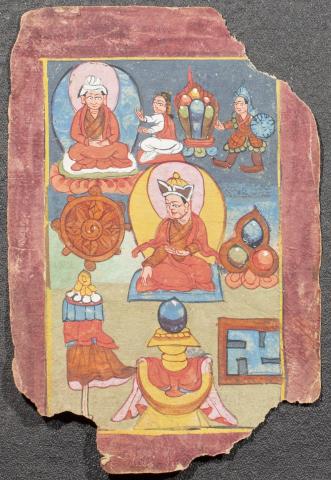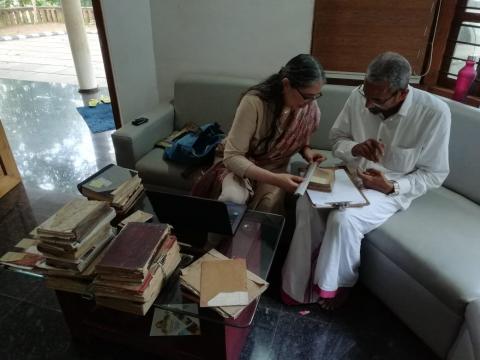
Aims and objectives
The Menri Monastery in northern India possesses the world's largest collection of manuscripts and block-print books relating to Bon, the pre-Buddhist religion of Tibet. Most of these materials were rescued from ancient Tibetan monasteries before those institutions were destroyed in the Cultural Revolution (1966-69). They are essential to support the efforts of Bon monks and nuns to preserve their unique culture as well as the efforts of scholars elsewhere to understand not only the Bon religion but also the distinctive aspects of Tibetan Buddhism and indeed the early cultural and intellectual history of Central Asia. It is proposed to survey the holdings and facilities of this library in order to prepare a proposal for a future major digitisation project.
These treasures are presently subject to a variety of perils. They are currently housed in a recently-completed building but it is only partially air-conditioned and humidity-controlled, and the functioning of these systems is frequently interrupted by power failures. Having so many unique materials in this one location means that a single disaster such as a massive mud slide (one of which destroyed a nearby building a few months ago), an earthquake (not an infrequent occurrence in this area), or a fire (in the absence of control mechanisms and professional fire-fighters) could quickly extinguish substantially if not entirely the records of this ancient tradition. There is virtually no security against theft or vandalism, the former being a threat of great concern due to the flourishing and growing black market in stolen art objects of all sorts in the sub-continent.
There is therefore an urgent and compelling need to digitise a substantial portion of the holdings of the Yungdrung Library. This pilot project would enable a systematic survey of the library to be undertaken with a view to determining just how much there is that ought to be digitised and is suitable for such copying, the facilities that are available and the training needs of the staff.
Where Bon manuscripts and xylographs are held elsewhere in the world, the focus has been on making the canonical scriptures (the Tengyur commentaries as well as the primary source Kanjur) accessible, but little else. Limited, and often incompletely catalogued, collections of Bon manuscripts and xylographs are held by the British Library, the School of Oriental and African Studies of the University of London, the Universities of Oxford and Cambridge and the Library of Tibetan Works and Archives in Dharamsala, India. Modern reprints are held at the University of Virginia at Charlottesville, Columbia University in New York, the Center for Research Libraries in Chicago, the Library of Congress in Washington, DC, and in much smaller collections in several other universities.
A written report will provide a thorough analysis of the holdings of the library and identify those that ought to be digitised, together with an estimate of their number and a description of their condition. The report would also suggest how the necessary training of staff members might be organized. It would, in addition, describe the workspace and facilities available for the project and would detail the equipment and supplies that would have to be acquired. This report would be the basis for an application for a major grant to support the digitisation and preservation effort.
Outcomes
With the regular assistance of four monks, all the Bon manuscripts that the Monastery possess were located, examined and documented: a total of 129 pechas consisting of 62,854 pages of text. (The pecha is the traditional format of Tibetan books, consisting of loose leaves of handmade paper wrapped in cloth, placed between wooden boards, and secured with a belt.) In addition, 18 sets of handmade illustrated initiation cards, or tsakli, were located totalling 479 individual cards which are employed in various rituals and contain significant amounts of text on the verso.
Staff members of the Monastery who had assisted in the pilot project were eager to participate in carrying out a future major digitisation project of digitisation and would be capable of doing so, with guidance and training provided in copying, listing, transliteration, and preserving the materials according to EAP guidelines, as well as in modern archival management techniques generally. His Holiness the Abbot, who has ultimate authority over the operation of the Library as well as all other units of the Monastery, was supportive of such a digitisation project as well as the training programme.
The Abbot’s permission is required to consult some of the manuscripts, particularly those that have traditionally been available only to practitioners who had received specific initiations or empowerments (wang). His approval was obtained for the future digital copying of such items and in fact he proved to be enthusiastic and eager to spread information about the Bon religion.
Survey report (PDF document 92KB)
Listing of manuscripts and initiation cards (PDF document 263KB)



